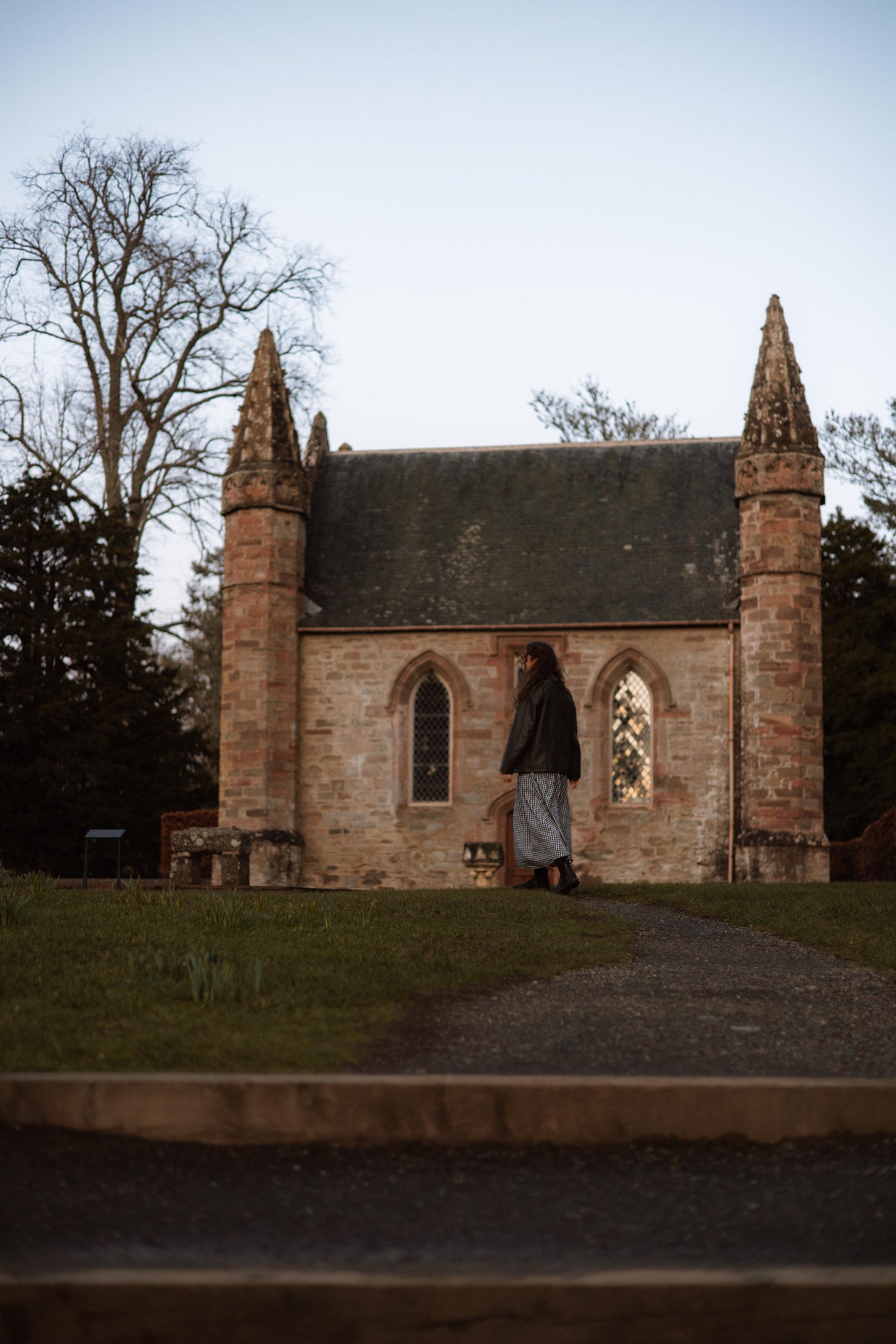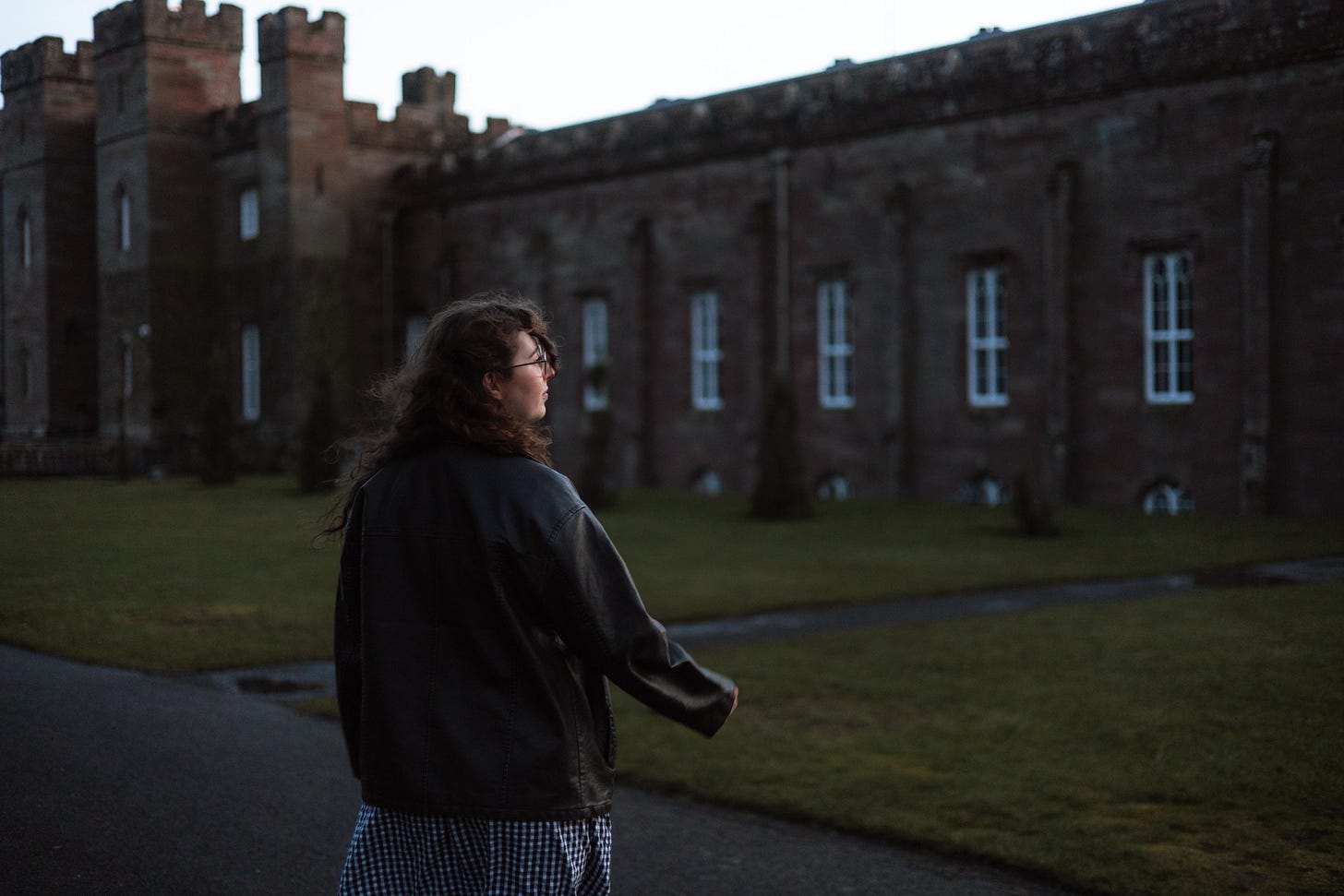Hello, I’m Beth! I’m a full time creator based in the Cairngorms in love with Scotland and Scottish history. Subscribers receive weekly newsletters about Scotland’s history and folklore, and a little about my life living and adventuring in this country. If you’d like to support my work as a writer, you can become a paid subscriber.
Interested? Click subscribe…
On this day in 1306, Robert Bruce, Earl of Carrick and Lord of Annandale, became King of Scots. His inauguration ceremony (he may have had a coronation but Scotland would not gain the formal rights to this until 1329) at Scone was surely fraught with tension and lacking in the glory that we would expect from a medieval ritual of authority. In the eyes of many Scots, Robert Bruce was a murderer who had usurped the throne of Scotland.
The Murder of Comyn
Only six weeks before on February 10th, Robert had committed an unquestionably shocking act by murdering his political rival, John Comyn, Lord of Badenoch, before the high altar of the church of the Greyfriars in Dumfries. Robert may not have dealt the killing blow, with some accounts of the event stating that although he struck John, the job was finished by his loyal companions. Regardless, John Comyn was killed in an act that would both damn and haunt Robert for the rest of his life.
Robert and John were leading figures of Scotland’s two primary rival families—the Comyns and the Bruces—and held strong claims to any revival of a Scottish kingship. They had spent the previous decade as two highly ambitious young men grappling for influence in a kingdom shattered by the overlordship of Edward I of England. Both were co-guardians of Scotland from 1298 to 1300, with Robert resigning the role after an altercation at a guardianship meeting which resulted in John allegedly attempting to strangle Robert. Shortly after this and in anticipation of another English invasion, Robert defected to Edward I in an attempt to regain his political influence in Scotland and protect his territory. John also resigned as guardian, but continued to be a leader of Scottish resistance to Edward until his negotiated surrender in early 1304.
Both men were now in Edward’s peace, but their unpleasant history and the potential of Scottish kingship continued. It was inevitable that eventually, one would remove the other.
In the end, it was Robert who removed John. Their meeting on February 10th 1306 in Dumfries is shrouded in mystery. There is no concrete evidence as to why these two ambitious men, who clearly hated each other, chose to meet on this fateful day. Theories abound, ranging from it being a simple business meeting that turned sour, to a confrontation between the two over John betraying Robert’s plans for the throne to Edward I. There is also an argument that this was a premeditated act of violence by Robert, who convinced John to meet with him in the guaranteed safety of a church but then deliberately violated this sanctity by slaughtering his enemy at the high altar.
The personal and political history between Robert and John doesn’t exactly challenge this accusation of premeditated murder. However, I would argue that this was not a premeditated event, but rather a crime of passion. I base this on two main reasons: Robert’s reaction to the murder, and his decision to usurp the throne.
The speed of the timeline from John’s murder to Robert’s inauguration six weeks later on March 25th highlights what I would interpret as sheer panic from Robert. In the days following the murder, Robert rushed to Glasgow to seek absolution from his actions and gain political support from Robert Wishart, Bishop of Glasgow. Wishart was already a tried and tested political heavyweight of the Scottish Wars of Independence who was determined to retain the independence of the Scottish Church from English religious authority. Moreover, Wishart was already an ally of the Bruces; seeking his spiritual and political help made sense.
For a man who had just committed murder on holy ground, gaining the support of the Scottish Church was crucial if he were to make an attempt to usurp the throne of Scotland. John’s murder essentially guaranteed that Robert would be excommunicated, and excommunicated individuals would not be supported as king.
This is a key reason why I do not think that Robert planned to murder John Comyn in February 1306. It would be an absolutely self-destructive and frankly idiotic decision to premeditate the murder of your political rival in a church, with the knowledge that you intended to become king. For the remainder of Robert’s life and claims to Scottish kingship, John’s murder would be consistently used as an argument against him. I don’t believe that Robert was stupid enough to have planned such an event, but rather that it was a horrifyingly violent reaction to an argument between the two men. Ultimately, we will never know exactly why or how those events in Dumfries transpired, but transpire they did.
Usurping the Throne
Wishart both absolved Robert and campaigned for the Scottish Church to throw support behind the would-be King of Scots, and attended Robert’s inauguration ceremony at Scone on March 25th alongside several other Scottish bishops. The political support of the Scottish Church would remain a crucial tool for Robert to utilise in the years to come.
However, the representation from the highest noble class of Scotland was indicative of the immense opposition Robert would face in his kingdom. Only four earls attended Robert’s inauguration: John Strathbogie, Earl of Atholl; Alan, Earl of Menteith; Malcolm, Earl of Lennox; and Donald, the infant Earl of Mar. English records of arrests, forfeitures and executions from 1306-1307 suggest that there were a substantial number of knights and esquires in attendance, despite the poor numbers of elite nobility.
Moreover, Robert’s inauguration was blighted by missing symbols of ritualistic legitimacy used in the inaugurations of Kings of Scots, most notably the Stone of the Scone. This was stolen and taken to England by Edward I of England upon his initial conquest of Scotland in 1296. Symbols of power were absolutely essential in medieval ceremonies, and the Stone’s loss would have been sorely felt at Robert’s inauguration on March 25th 1306.

In the face of great criticism and opposition, Robert needed to take advantage of every piece of legitimacy that he possibly could. This can be seen in the ceremony’s location being at Scone, probably on Moot Hill, the traditional inauguration location for Kings of Scots since first recorded in 843. Various ceremonial traditions were probably included: the Gaelic reciting of the king’s royal genealogy and justification of his blood claim to the throne, oaths taken by Robert as to his duties as king, and replacement items such as a sceptre, orb and coronet.
A critically important attendee and participation in the inauguration ceremony—although possibly a day late—was Isabella MacDuff, Countess of Buchan. Isabella’s active participation in the ceremony fulfilled a traditional role held by her natal family, the earls of Fife, in placing the new king on the Stone of Scone. Although the Stone was missing, Isabella was not, and thus she herself was an integral symbol of legitimacy at this contentious event.
Isabella’s presence and actions at the inauguration are not to be understated. As the daughter of the previous Earl of Fife and sister (or perhaps aunt) of the current Earl, a minor in English captivity, Isabella was the only direct relation able to fulfil this symbol role. Moreover, Isabella was married to John Comyn, Earl of Buchan, a close kinsman of the same John Comyn of Badenoch murdered by Robert in Dumfries only a month prior.
This event was therefore a spectacular display of an elite woman abandoning her marital family to follow the duties of her natal family and enact her own political values. Isabella essentially defied her husband to participate in the inauguration ceremony of her marital family’s great enemy, Robert Bruce.
I was lucky enough to spend considerable time researching and writing about Isabella for my upcoming book, Women in the Scottish Wars of Independence (stay tuned for more information!). This act of personal and political rebellion speaks volumes for her character and importance.
How to Get Away with Murder? (you can’t)
While Robert was successfully absolved of his murderous sins by Wishart and inaugurated as King of Scots, his security was very short-lived. He still faced enormous opposition in Scotland for murdering Comyn, and now turned to the imminent threat of the return of an English army.
At his inauguration, his wife and queen, Elizabeth de Burgh, was said to have commented, “Alas, we are but king and queen of the May” and described her husband as, “King Hobbe of summer”. Elizabeth’s predictions were soon to be realised.
On June 19th 1306, Robert’s forces were resoundingly defeated at the Battle of Methven, near Perth, by the army of Edward I’s lieutenant in Scotland, Aymer de Valence. This was the first of several disasters for Robert, who was defeated again that summer at the Battle of Dalrigh by the MacDougalls and forced to flee west to the Hebrides. Alongside Isabella MacDuff, Robert’s queen, daughter (and importantly, heiress), and sisters were later captured and imprisoned in England, where they would remain for around 8 years. Isabella would die as a captive for her role in Robert’s inauguration ceremony.
Robert also lost a significant number of male allies and family to execution and imprisonment, including his brother, Neil Bruce. Executions were also handed out to Robert’s brother-in-law, Sir Christopher Seton, and close ally, John Strathbogie, Earl of Atholl. Forced to hide and lick his wounds in the Hebrides, the aftermath of March 25th 1306 was nothing short of a disaster for Robert Bruce.
Conclusion
If you are familiar with Robert’s reign and the Scottish Wars of Independence, then you will know that Robert did make an incredibly impressive comeback and achieve significant military successes. His reign is often associated as a time of the first concept of a Scottish national community and identity, with iconic events such as the Battle of Bannockburn and the Declaration of Arbroath remembered and celebrated. Robert continued to face political opposition through his reign and regularly wrestled with the consequences of his murder of Comyn, but he died in 1329 as an undisputed King of Scots. Let’s not talk about what happened next—we’ll save that for another day.
On this day in 1306, Robert Bruce became Robert I of Scotland. You can still visit the place where he became king, with Moot Hill still a visible and hallowed site within the grounds of Scone Palace. Despite the utter disaster and severe blunders of the opening act of Robert’s reign, he still managed to become one of the most formidable military leaders in Scottish history with an exceptional royal legacy.
Thanks for joining me—see you next week for more Scottish history!
Beth xx
Can’t wait until next week? Here’s some more:
The Black Douglases of St Bride’s Church





Love your pieces, so good!